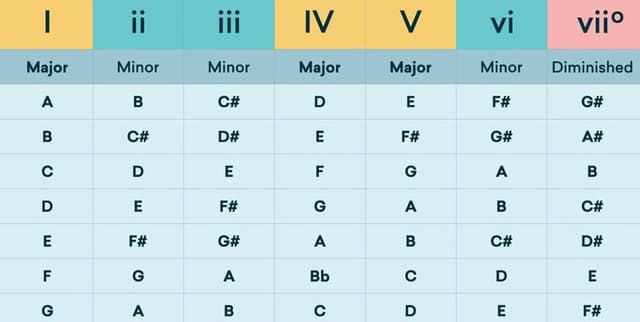Common Chord Progressions Dataset
Education & Learning Analytics
Tags and Keywords
Trusted By




"No reviews yet"
Free
About
This dataset presents 50 common chord progressions, notated using the Roman numeral system where uppercase signifies major chords and lowercase denotes minor chords. Each progression is categorised by its musical style and indicates whether it is transposable. This resource is highly valuable for applications in education and learning analytics, particularly within the field of music, and also serves as a foundational dataset for data visualisation, classification, and Natural Language Processing (NLP) tasks related to musical structure.
Columns
- Style: This column identifies the musical genre or style associated with each chord progression.
- Progression: This lists the sequence of chords, expressed in Roman numeral notation, indicating the root and quality (major/minor) of each chord in the progression.
- Transposable: A boolean indicator specifying if the chord progression can be moved to different keys while maintaining its inherent structure.
Distribution
The dataset is provided as a CSV file. It contains 50 unique chord progressions. Analysis of the 'Style' column reveals that 25% are classified as 'Popular', 25% as 'Rock', and the remaining 49% fall into 'Other' categories. Regarding transposability, 37 (73%) of the progressions are marked as 'true' (transposable), while 10 (20%) are marked as 'false' (not transposable).
Usage
This dataset is ideal for:
- Music education: Aiding students and teachers in understanding and analysing common chord structures.
- Music theory research: Exploring patterns and characteristics of popular music progressions.
- AI and Machine Learning development: Training models for music generation, classification of musical pieces, or pattern recognition.
- Data visualisation projects: Creating visual representations of musical relationships and structures.
- Natural Language Processing: Analysing the "grammar" and "syntax" of musical progressions.
Coverage
The data originates from a global region and focuses on widely accepted and common chord progressions, implying a general applicability rather than being limited by specific geographical or time-based factors.
License
CC0
Who Can Use It
- Music Students and Educators: For learning and teaching fundamental chord theory and analysis.
- Data Scientists and Machine Learning Engineers: To develop algorithms for music analysis, generation, or classification.
- Researchers: In fields such as musicology, digital humanities, or computational musicology.
- Application Developers: To integrate music theory knowledge into educational apps, music composition tools, or interactive learning platforms.
- Anyone interested in music theory or data analysis: Provides a structured insight into common musical patterns.
Dataset Name Suggestions
- Common Chord Progressions
- Roman Numeral Music Chords
- Musical Progression Dataset
- Transposable Chord Patterns
Attributes
Original Data Source:Chord Progressions
Loading...
